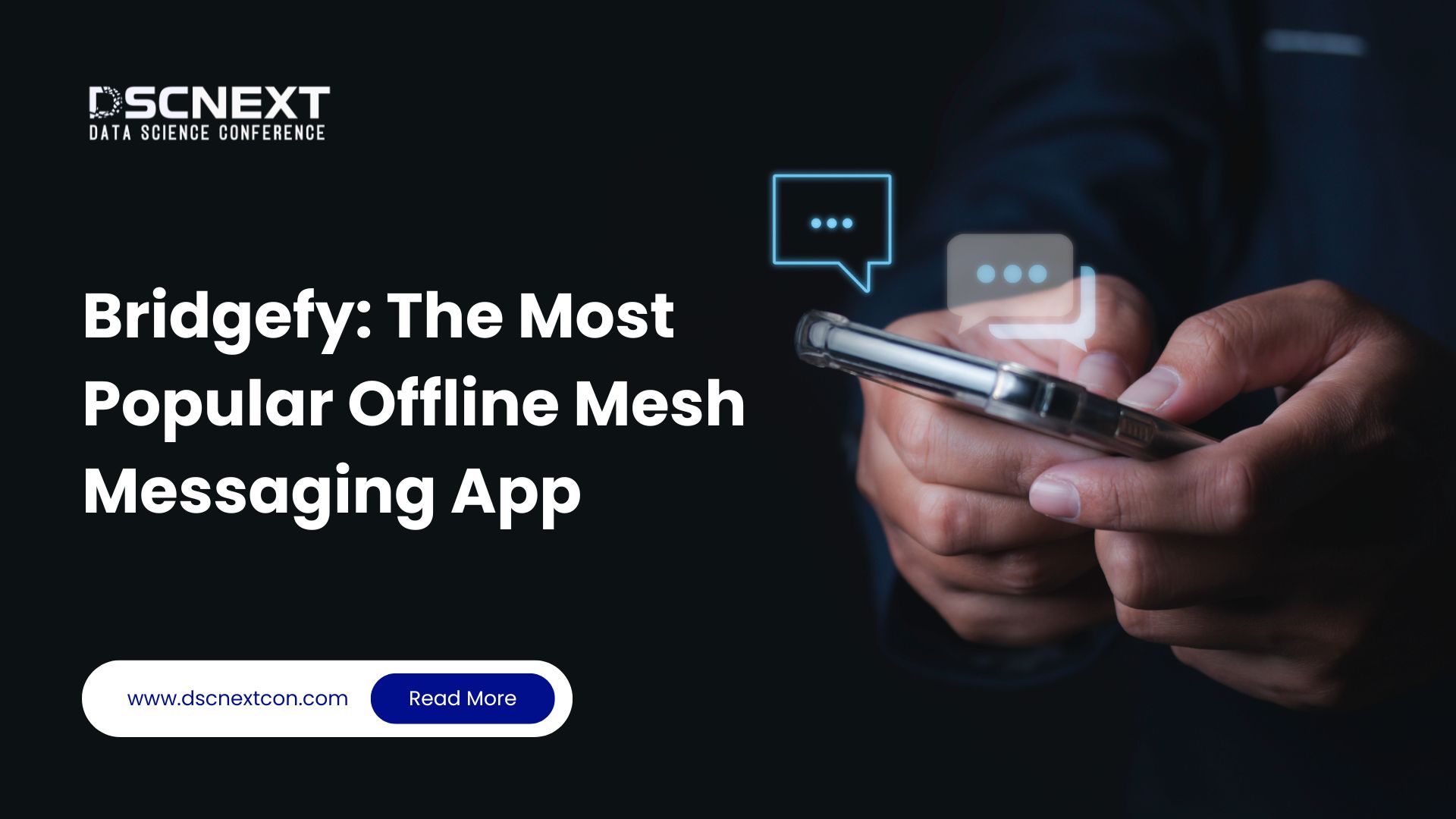
Bridgefy is a Bluetooth-based offline messaging app that allows users to communicate without the internet. Discover its real-world use, mesh networking features, and how data science enhances its performance for 2025.
Introduction
The internet has reached some of the most remote corners of the world, but there are still times when connectivity fails — whether you’re on a cruise, in the mountains, at a packed stadium, or even in a city hit by a power outage or cyberattack.
In 2025, as our dependency on real-time communication grows, so does the need for resilient, offline alternatives. This is where offline messaging apps like Bridgefy become essential.
Originally popularized during internet blackouts in places like Hong Kong and Assam, Bridgefy has since evolved into a reliable communication tool for emergencies, large events, and smart city use cases — proving that decentralized, Bluetooth-based networking is more than just a backup. It’s a future-forward necessity.
What is Bridgefy?
Bridgefy is one of the most widely used offline messaging apps that enables communication without an internet connection. It uses Bluetooth mesh networking, allowing devices to relay messages across a network of users. This makes it invaluable during internet shutdowns, large public events, or in rural areas lacking connectivity.
How Does Bridgefy Work?
Bridgefy connects smartphones within a 100-meter radius using Bluetooth. When the recipient is out of range, the app uses nearby devices running Bridgefy to forward the message across multiple hops, forming a mesh network. It supports private chats, group broadcasts, and multi-hop delivery even in dense, congested environments.
Key Features and Use Cases
Bridgefy functions entirely offline, is easy to set up with just Bluetooth permissions and a phone number, and is available on Android and iOS. Its most common use cases include:
Protests and political unrest
Natural disasters and emergency zones
Crowded events like concerts or festivals
Remote or rural areas with no signal
Bridgefy in 2025: Is It Still in Use?
Yes, Bridgefy continues to be active and relevant in 2025. The app is still available on both Android and iOS, with regular updates and a strong user base—especially for offline coordination at events and during network outages.
On Android, Bridgefy’s latest version (v4.4.91) was released on June 18, 2025, reflecting ongoing development and performance improvements.
On iOS, the app has recorded over 11 million downloads and remains one of the top-rated apps for offline messaging.
In March 2025, users on Reddit (e.g., r/serbia) discussed installing Bridgefy ahead of expected internet blackouts during civil unrest—showing its continued role in real-world communication planning.
These indicators confirm that Bridgefy is not just a historical tool but an actively used solution for resilient peer-to-peer communication in 2025.
Case Study: Bridgefy During Hong Kong Protests
During the 2019–2020 Hong Kong protests, fears of surveillance and internet blackouts led thousands of activists to adopt Bridgefy. The app enabled:
Real-time coordination without cellular or Wi-Fi
Anonymous broadcasting without centralized servers
Bridgefy’s broadcast mode helped protestors stay informed and organize securely—demonstrating its value in politically sensitive environments.
Continued Relevance: Why Bridgefy Still Matters in 2025
Bridgefy’s importance has only grown. In 2025, network outages due to conflict, infrastructure failure, or natural disaster continue to threaten connectivity.
Real-World Example
Gaza (June 2025): Telecom infrastructure destroyed during conflict led to widespread communication loss. A mesh app like Bridgefy could have enabled local coordination.
AT&T Outage (U.S., Feb 2024):A massive failure left millions without mobile networks, highlighting the fragility of centralized systems—even in advanced economies.
These events show that offline mesh networks are essential, not optional, in today’s digitally dependent world.
Data Science Perspective
Bridgefy’s decentralized design opens the door for graph-based analysis, where devices act as nodes and Bluetooth links as edges. Data scientists can study:
Message delivery paths
Network resilience
Optimal routing under congestion
Bluetooth signal strength (RSSI), connection duration, and device mobility are also valuable data points for predictive modeling. Simulating Bridgefy-like networks helps researchers explore how such tools perform in disaster recovery, rural outreach, and crisis-response scenarios. Additionally, anomaly detection can be used to identify irregular patterns or security vulnerabilities.
Security Considerations
Despite its benefits, Bridgefy has faced scrutiny over encryption flaws and lack of end-to-end security. While it excels in accessibility and usability, it is not recommended for highly sensitive communication unless future versions implement stronger privacy protocols.
Conclusion
In a world increasingly affected by network blackouts, surveillance threats, and centralized failures, Bridgefy’s relevance in 2025 is stronger than ever. Whether it’s a protest, disaster, or remote region, Bluetooth mesh messaging offers an independent, resilient communication layer.
As platforms like DSC Next 2026 explore emerging data science and connectivity solutions, Bridgefy stands out as a powerful example of how simple, data-informed design can keep people connected—even when the cloud is out of reach.
Reference
TechWiser – Best Offline Messaging Apps
BBC – Bridgefy in Hong Kong Protests

